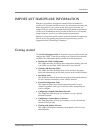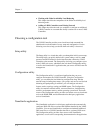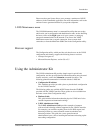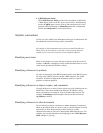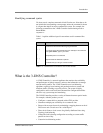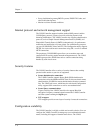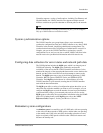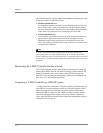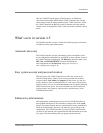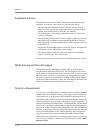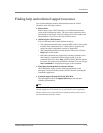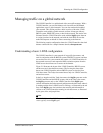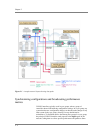
Introduction
3-DNS
®
Administrator Guide 1 - 9
Once the 3-DNS Controller returns a DNS answer to an LDNS, the
conversation between the LDNS and the 3-DNS Controller ends, and the
client connects to the IP address returned by the 3-DNS Controller. Unlike
the 3-DNS Controller, the BIG-IP system sits between the client and the
content servers. It manages the client’s entire conversation with the content
server.
What’s new in version 4.5
The 3-DNS Controller, version 4.5 offers the following major new features
in addition to many other enhancements.
Automatic discovery
The 3-DNS Controller can now automatically collect and add the virtual
server configuration information for any BIG-IP systems and host servers in
the 3-DNS Controller configuration. The Discovery setting has three levels:
OFF, ON, and ON/NO DELETE. For more information on
auto-configuration and the Discovery setting, see Overview of
auto-configuration, on page 5-16.
Easy system account and password creation
With this release, the 3-DNS Controller now offers one screen, in the
web-based Setup utility, where you can set the passwords for the three
system accounts: root, admin, and support. On this screen, you can also
specify whether to allow command line access, web access, or both for the
support account. You can view the User Access screen by opening the Setup
utility from the home screen. For more information on user accounts and
system accounts, see Chapter 6, Administration and Monitoring, in the
3-DNS Reference Guide.
Enhanced synchronization
The configuration synchronization process for the 3-DNS Controller has
been updated and improved. The controller no longer relies on the syncd
daemon for synchronization. Instead, synchronization occurs automatically,
based on file timestamps, whenever you make any type of change to the
configuration. The 3-DNS Controller also polls any Link Controllers that
you have in your network, and synchronizes the link information across the
sync group. Note that working with sync groups remains the same.



